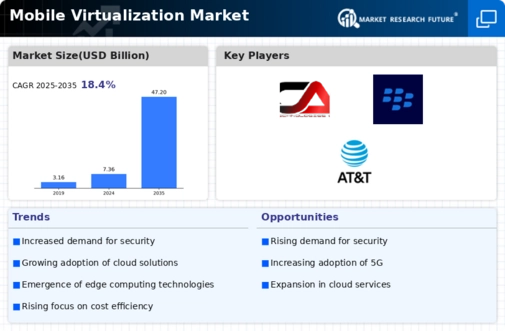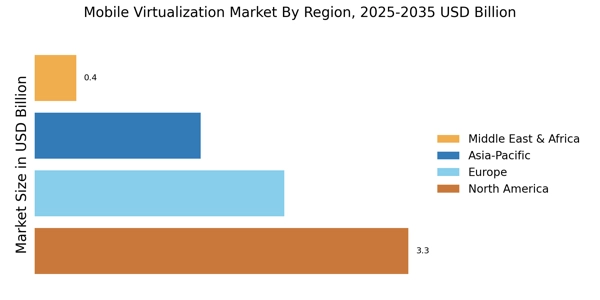Leading market players are investing heavily in research and development to expand their product lines, which will help the mobile virtualization market grow even more. Market participants are also undertaking numerous strategic activities to expand their global footprint, with important market developments including new product launches, contractual agreements, mergers and acquisitions, higher investments, and collaboration with other organizations. To expand and survive in a more competitive and rising market climate, the mobile virtualization industry must offer cost-effective items.
Manufacturing locally to minimize operational costs is one of the key business tactics manufacturers use in the global mobile virtualization industry to benefit clients and increase the market sector. Major players in the mobile virtualization market, including VMware, Inc (US), IBM Corporation (US), CA Technologies (US), Oracle Corporation (US), and others, are attempting to increase market demand by investing in research and development operations.
International Business Machines Corp (IBM) is a provider of information technology (IT) products and services. The company produces and sells system hardware and software and offers infrastructure, hosting, and consulting services. IBM's product portfolio includes analytics, artificial intelligence (AI), automation, blockchain, cloud computing, IT infrastructure, IT management, cybersecurity, and software development products. The company also offers cloud, networking, security, technology consulting, application, business resilience, and technology support services. It serves the automotive, banking and financial markets, electronics, energy and utilities, healthcare, insurance, life sciences, manufacturing, metals and mining, retail and consumer products, and telecommunication industries.
In July 2019, IBM closed a transaction in which it bought all the issued and outstanding shares of Red Hat. While each share was bought for $190, the total equity value amounted to nearly $34 billion. With its scale and depth, IBM's unmatched industry expertise and innovation can now be paired with the hybrid cloud technologies developed by Red Hat and will thus lead to the acceleration of innovation with the next-gen hybrid multi-cloud platform.
Microsoft Corp creates, licenses, and supports software products, services, and devices. The firm offers a comprehensive range of operating systems, cross-device productivity applications, software development tools, server applications, business solution applications, video games, desktop and server management tools, and training and certification services. It also manufactures, designs, and sells hardware products, including PCs, gaming and entertainment consoles, tablets, and other intelligent devices. The firm delivers a broad spectrum of services, such as cloud-based solutions, solution support, and consulting services. Microsoft markets, distributes, and sells offerings via original equipment manufacturers, resellers, distributors, online marketplaces, Microsoft stores, and other partner channels.
In October 2022, Microsoft and Meta collaborated to develop immersive experiences for the future of work and play. As declared during Meta Connect 2022, the collaboration allowed to bring Mesh for Microsoft Teams to Meta Quest devices. It will assist people to gather virtually where work happens on smartphones, laptops, and mixed-reality headsets. Mesh for Teams with Meta Quest 2 and Meta Quest Pro devices will allow people to connect and collaborate as if they are together in person.


















Leave a Comment